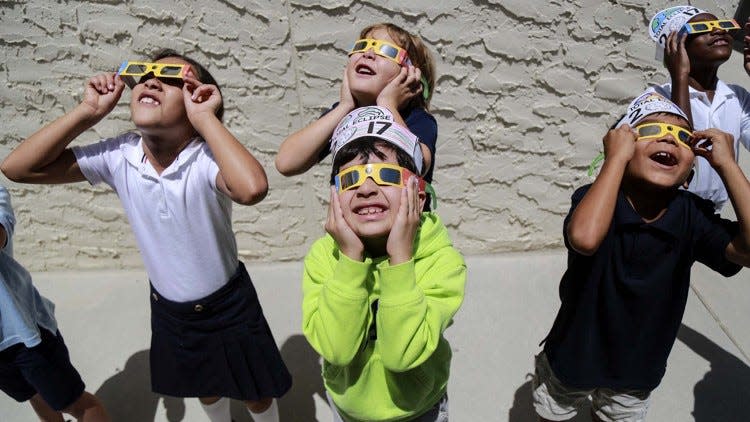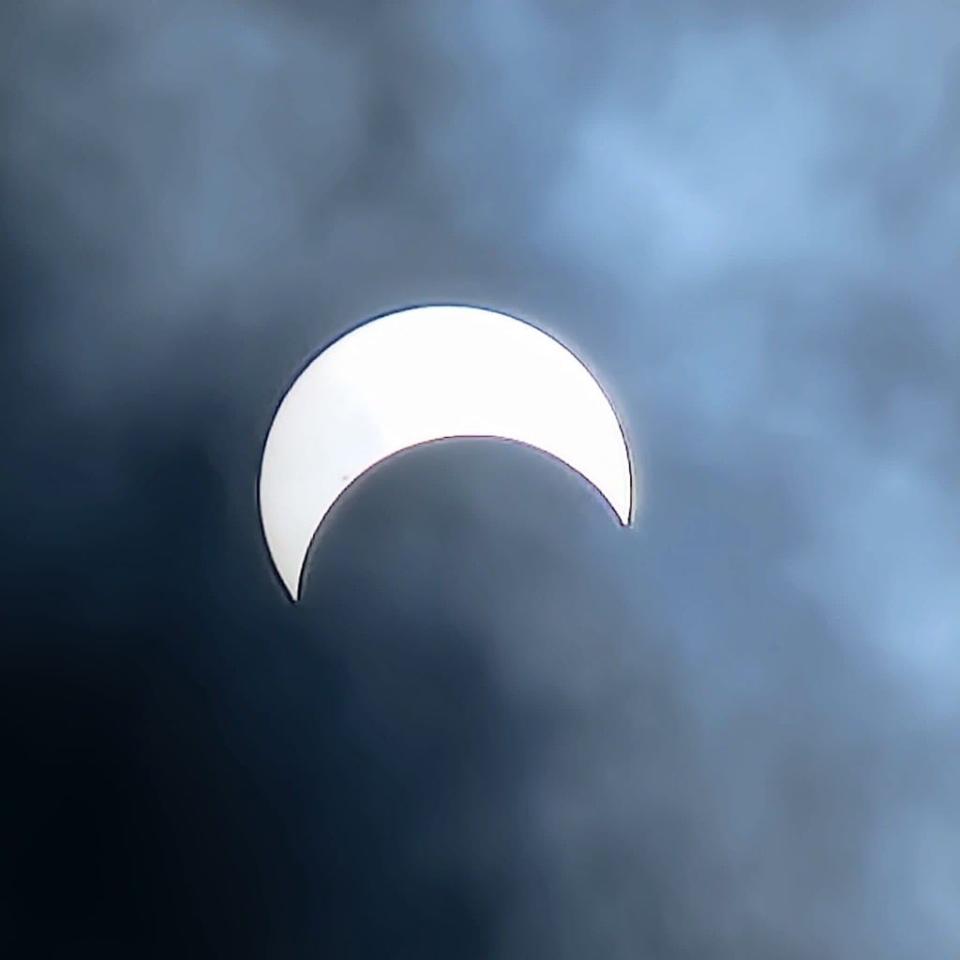Solar eclipse in Palm Beach: 5 things to know
Though Palm Beach won't be treated to a full solar eclipse Monday, the experience will be enough to drive people from their homes and businesses into front yards and onto sidewalks around the island.
Here are five things you need to know if you plan to take in the eclipse from Palm Beach.
1. We won't see the full eclipse from here — but it still will be pretty cool.
At its peak about 3 p.m. Monday, the moon will block about half of the sun when viewing the eclipse from Palm Beach, according to NASA.
The moon will begin moving between the sun and Earth about 1:50 p.m. Monday, NASA's Eclipse Explorer shows. The coverage from town will be about 49%, the interactive tool shows. The moon will move from between the sun and Earth about 4:15 p.m., the explorer shows.
You can check out the Eclipse Explorer here to see an estimated view of the eclipse from anywhere in the U.S.
2. The weather will be beautiful.
The forecast for Palm Beach on Monday afternoon would be great even if we weren't looking forward to the eclipse.
The temperature is estimated to be about 79 degrees, according to NASA.
More: Lover of lights: Palm Beacher Bill Bone heads to Arkansas for eclipse, just saw aurora borealis
Several meteorological organizations, including NASA, Accuweather, Weather.com and the National Weather Service, put the chance of rain Monday afternoon at 0%.
However, there could be some cloud cover, The Palm Beach Post reported.
Even if expected sea breezes blow in a few clouds, it's unlikely they will completely block the view, The Post reported.
Read the full weather report from Palm Beach Post reporter Kimberly Miller.
3. You can join a party or watch from your garden.
There are two eclipse-watching gatherings in West Palm Beach you may want to join, according to The Palm Beach Post:
Cox Science Center, 4801 Dreher Trail N., West Palm Beach; 10 a.m. to 3 p.m. Monday. The Cox Science Center will open its doors to eclipse enthusiasts, inviting people into the organization's observatory, which has the largest publicly available telescope in South Florida. Thanks to its solar filters, eclipse viewers can take a look through the telescope without needing solar glasses, The Post reported. General admission is $24 for adults; $20 for children 3-12; $22 for seniors (ages 60 and above).

West Palm Beach City Hall Courtyard, 401 Clematis St., West Palm Beach; 2 to 4 p.m. Monday. Join the West Palm Beach Downtown Development Authority for an eclipse viewing party with snacks, coffee and water available to buy from Salento Coffee. Free eclipse glasses will be available during the party. Attendees also can view the eclipse through a telescope that has a solar filter.
No formal gatherings are planned in Palm Beach, but some have been known to view astronomical events from the Lake Trail or Midtown Beach.
We've also heard a few people plan to have small gatherings outside of their homes to enjoy the eclipse with friends.
See more eclipse-watching opportunities in Palm Beach County.
4. Don't forget to protect your eyes.
Remember, you can't look directly at the solar eclipse without some kind of protection for your eyes.
The Palm Beach County Library System has solar eclipse glasses available for free at its branches, while supplies last. Click here to learn more.

Some glasses and solar filters are available to purchase on Amazon. Be sure to check before buying to make sure your purchase will arrive before Monday.
If you feel crafty, you can make your own eclipse viewer using either a piece of paper or cereal box.
Read more and get instructions here.
5. Contribute to science!
You can use a NASA-sponsored app to help scientists better understand what happens before, during and after a solar eclipse. How cool is that?
The GLOBE Observer app — free for Apple and Android — prompts you to add temperature readings and observations throughout a solar eclipse.
Keep it on your phone to continue to help NASA scientists around the globe learn more about clouds, mosquitos, tree growth and more in your area.
Bonus: When is the next total solar eclipse?
According to NASA, the next total solar eclipse that can be seen from the contiguous U.S. will be on Aug. 23, 2044. A 2026 total solar eclipse will be Aug. 12, 2026. The path of totality for that event will pass over northern Spain, parts of the Arctic, Greenland and Iceland, along with the Arctic and Atlantic oceans, according to the National Solar Observatory.
Kristina Webb is a reporter for Palm Beach Daily News, part of the USA TODAY Florida Network. You can reach her at kwebb@pbdailynews.com. Subscribe today to support our journalism.
This article originally appeared on Palm Beach Daily News: Solar eclipse in Palm Beach: 5 things to know

